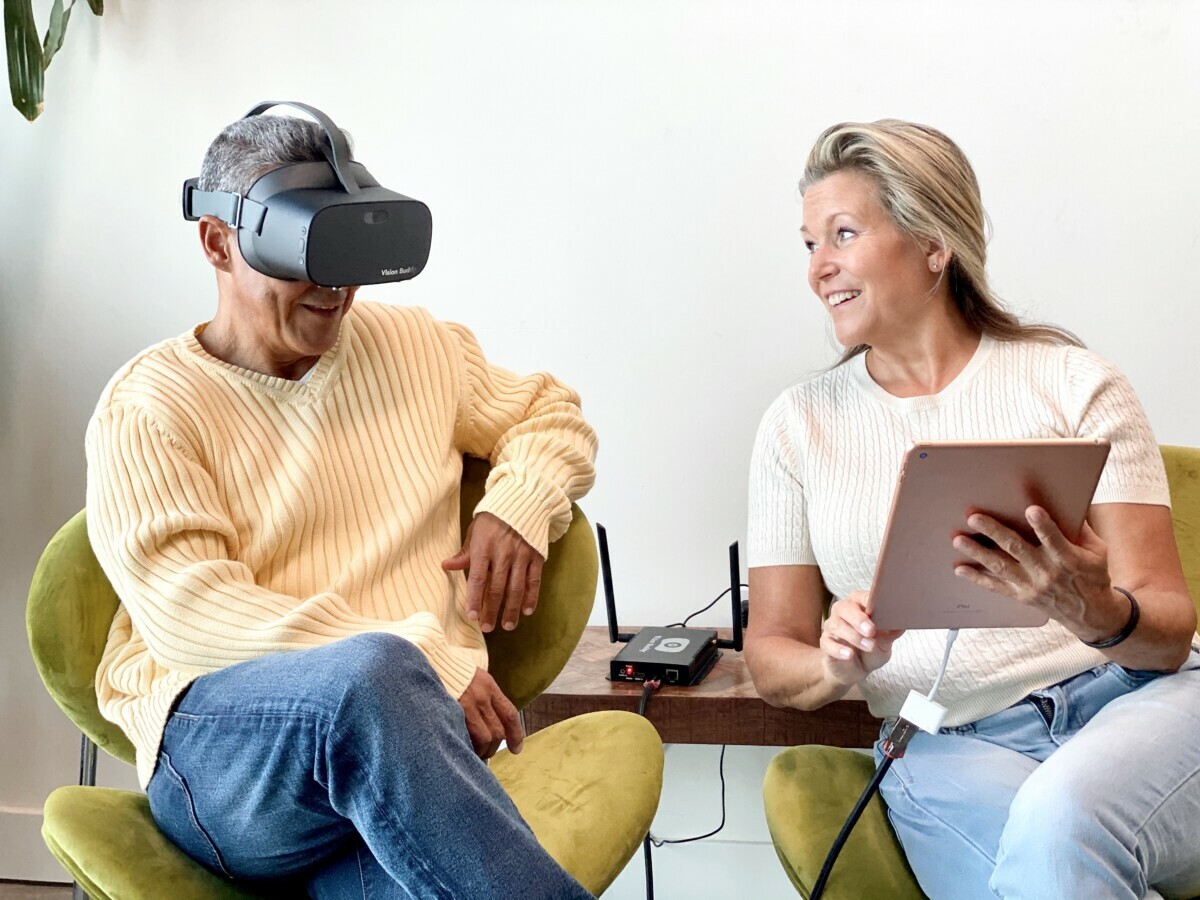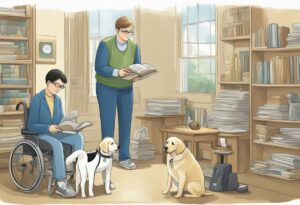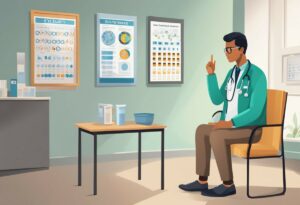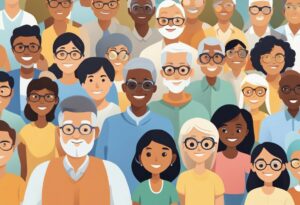Your Guide to Independence: Maximize Low Vision Aids for Enhanced Living

Navigating daily life with low vision can be challenging, but with the right aids and resources, independence and an improved quality of life are within reach. Low vision aids are designed to help individuals with visual impairments maximize their remaining vision and complete everyday tasks more easily. From electronic magnifiers to adaptive non-optical devices, there are a variety of tools available to assist people with low vision in maintaining their independence.
This guide will provide practical information and tips on how to make the most of these aids based on personal needs and preferences. By understanding the various options available and learning how to effectively use each device, individuals with low vision can overcome obstacles and regain their independence, ensuring they can live life to the fullest.
Along with low vision aids, rehabilitation services offered by specialized optometrists can be of great help in developing strategies to cope with vision loss. This guide will emphasize the importance of seeking professional advice, too, in order to enhance the effectiveness of low vision aids and further improve the quality of life despite visual impairments.
Understanding Low Vision
Low vision is a condition where a person has a significant visual impairment that cannot be fully corrected with glasses, contact lenses, or surgery. It often interferes with daily activities due to the inability to clearly see objects, read, and recognize faces. In this section, we will discuss the causes of low vision and the different levels of vision loss.
Causes of Low Vision
There are several eye conditions and diseases that can lead to low vision. Some common causes include:
- Age-related macular degeneration (AMD): This is one of the most common causes of low vision in older adults. AMD occurs when the macula, which is responsible for central vision, becomes damaged.
- Glaucoma: This eye disease involves damage to the optic nerve, often due to increased pressure in the eye. Glaucoma can cause visual field loss and, if left untreated, can lead to blindness.
- Diabetic retinopathy: This condition is a complication of diabetes and occurs when the blood vessels in the retina are damaged. Diabetic retinopathy can cause vision loss and, in severe cases, blindness.
- Cataracts: A cataract is the clouding of the eye’s natural lens. This can cause blurry vision and difficulty seeing in low light conditions. Cataracts are often age-related and can be treated with surgery.
- Retinitis pigmentosa: This is a group of genetic eye disorders that affect the functioning of the retina. Retinitis pigmentosa causes progressive vision loss, eventually leading to blindness in some cases.
Levels of Vision Loss
Vision loss can be categorized into different levels, depending on the severity of the visual impairment. Some common levels of vision loss include:
- Mild vision loss: This level of vision loss may cause difficulty with certain tasks, such as reading small print or seeing objects in low-light conditions. Glasses or magnifying lenses may help with these tasks.
- Moderate vision loss: At this stage, vision loss starts to significantly impact daily activities. Low vision aids like magnifiers and electronic devices can help individuals with moderate vision loss to better navigate their environment.
- Severe vision loss: Severe vision loss or legal blindness occurs when a person’s visual acuity is 20/200 or worse, or they have a severely limited visual field. In these cases, low vision aids and rehabilitation services play a crucial role in helping individuals maintain independence and quality of life.
- Profound vision loss: This level of vision loss involves near-total blindness, and the person might only be able to perceive light and some basic shapes. Rehabilitation services, orientation and mobility training, and non-visual aids like talking devices, textured labels, and assistive technology are vital for those with profound vision loss to live a fulfilling life.
Maximizing Vision through Aids
Magnifiers
Magnifiers are one of the most common low vision aids that can be used to enhance daily activities. There are various types of magnifiers, such as stand magnifiers and handheld magnifiers, each designed for specific purposes. They are available in different magnification levels and sizes, making it crucial to select the appropriate type according to your needs.
Glasses
Specialized glasses can help those with low vision by providing enhanced magnification, better field of vision, and improved focus. Some glasses offer built-in telescopic or microscopic lenses offering additional optical support. Consult with a low vision specialist to find the most suitable glasses for your requirements.
Telescopes
Telescopes are another optical aid that can significantly improve vision for distance activities. There are handheld telescopes for occasional use and bioptic telescopes that can be mounted onto regular glasses. These telescopes require a prescription and proper fitting to ensure optimal vision improvement.
Lighting and Contrast Enhancements
Proper lighting and contrast enhancements play a significant role in maximizing vision for individuals suffering from low vision. Adjustable lamps and task-specific lighting solutions can help enhance visibility, while high contrast items such as bold print, large fonts, and high contrast labels make it easier to read and identify objects.
Assistive Technology
In today’s technologically advanced world, a variety of assistive technology solutions are available that can significantly improve one’s quality of life. Devices like video magnifiers, text-to-speech software, and smartphones with built-in accessibility features enable individuals with low vision to perform tasks with greater ease and efficiency. The continuous integration of technology into low vision aids ensures that these devices are becoming increasingly effective and user-friendly.
Seeking Professional Help
Low Vision Specialists
Low vision specialists are experts in helping individuals with low vision maximize their remaining vision and maintain independence. They provide assessments, recommend low vision aids and devices, and design personalized rehabilitation plans. If you are experiencing difficulties with daily tasks due to low vision, ask your eye doctor for a referral to a low vision specialist.
Optometrists
Optometrists are primary eye care providers who specialize in diagnosing and treating various vision conditions, including low vision. They can prescribe glasses, contact lenses, and other visual aids, and may refer you to a low vision specialist or ophthalmologist for further evaluation and treatment, depending on the severity of your condition. Regular visits to an optometrist are essential to maintaining eye health and addressing vision changes promptly.
Ophthalmologists
Ophthalmologists are medical doctors specialized in the diagnosis and treatment of eye diseases, disorders, and injuries. They can perform complex eye surgeries and provide comprehensive eye care. If your low vision is caused by an underlying eye condition or disease, an ophthalmologist may be involved in your care. In some cases, a combination of professionals, including optometrists, ophthalmologists, and low vision specialists, may collaborate to develop a comprehensive treatment plan tailored to your needs.
Building Quality of Life
Rehabilitation
Vision rehabilitation is crucial for individuals with low vision to maximize their independence, safety, and quality of life. Specialized programs and services, such as those offered at the Olmsted Center for Sight, provide comprehensive support tailored to each person’s needs. These programs often include:
- Occupational therapy: Helps individuals learn new techniques for accomplishing daily living tasks and adapting their environment.
- Support groups: Provide emotional support and practical advice from others who share similar experiences with low vision.
- Community resources: Connect individuals to local services, transportation options, and accessible facilities.
Education and Employment
For people with low vision, the right education and employment opportunities can drastically improve their quality of life. It is essential to explore different low vision aids and adaptive technologies that enable them to participate fully in educational and workplace settings. Examples of such aids include:
- Large print or audio books for reading
- Screen magnification or screen reader software for computer use
- Handheld magnifiers for reading small print
- Assistive devices for writing
Furthermore, vocational rehabilitation services can assist with job training, employment placement, and workplace accommodations, ensuring that people with low vision can maintain productivity and contribute to their communities.
Independent Living
Central to building a high quality of life is independent living. With the right low vision aids and resources, people can continue to enjoy various activities of daily living:
- Reading: Using electronic magnifiers or text-to-speech devices, individuals can still access printed materials and stay informed.
- Cooking: Adaptations like high-contrast cutting boards and talking food thermometers can help individuals prepare meals independently.
- Mobility: Orientation and mobility training, such as the one discussed in this research article, can teach safe and effective travel techniques even with low vision.
In conclusion, building a high quality of life for those with low vision is possible through rehabilitation, education, employment, and independent living resources. Access to appropriate aids, support groups, and community resources is essential for achieving a fulfilling and independent lifestyle.
Frequently Asked Questions
What are common types of low vision aids?
Low vision aids are devices designed to help individuals with impaired vision perform daily tasks more effectively. Common types of low vision aids include magnifiers, telescopes, video magnifiers, and screen readers. Magnifiers come in various forms, such as handheld, stand, or low vision glasses, also called wearable devices, which can be used depending on the user’s needs and preferences. Additionally, some low vision aids may be electronic, while others may be simple optical devices without any electronic components.
How do low vision aids enhance daily activities?
Low vision aids enhance daily activities by making it easier for users to read, write, participate in hobbies, and maintain their independence. For example, with a handheld magnifier, users can easily read text on food labels, medication bottles, or newspapers. Electronic magnifiers can be adjusted based on the user’s needs, such as controlling the level of magnification, brightness, or contrast. Some low vision aids also aid in navigation, such as talking GPS systems, which help users with visual impairments navigate their surroundings more easily.
What is the role of low vision rehabilitation?
Low vision rehabilitation focuses on helping individuals with vision loss maximize their remaining sight and maintain their independence. This may involve the use of low vision aids, as well as developing new strategies and skills for performing daily activities. A doctor of optometry who provides low vision rehabilitative services can create customized solutions based on the user’s needs and goals, ensuring they can continue living an active and fulfilling life.
Which low vision aids help with central vision loss?
For people with central vision loss, devices such as handheld or stand magnifiers can help with tasks like reading, writing, and other close-up activities. Electronic magnifiers are particularly useful for individuals with central vision loss, as they can offer additional customization options like brightness, contrast, and anti-glare settings. Additionally, telescopic lenses can assist with distance viewing tasks, such as recognizing faces or watching television.
What causes low vision conditions?
Low vision conditions can be caused by a variety of factors, including genetic conditions, injuries, or eye diseases such as age-related macular degeneration, glaucoma, diabetic retinopathy, and cataracts. Some low vision conditions are progressive, meaning they worsen over time, while others may remain relatively stable after diagnosis.
What treatments are available for low vision?
While some low vision conditions can be treated medically or surgically, others have no cure or may still leave a person with significant vision loss even after treatment. In these cases, low vision rehabilitation aims to help individuals make the most of their remaining vision and improve their quality of life. This can involve the use of low vision aids, adaptive strategies, and the development of new skills to maximize their visual abilities.



